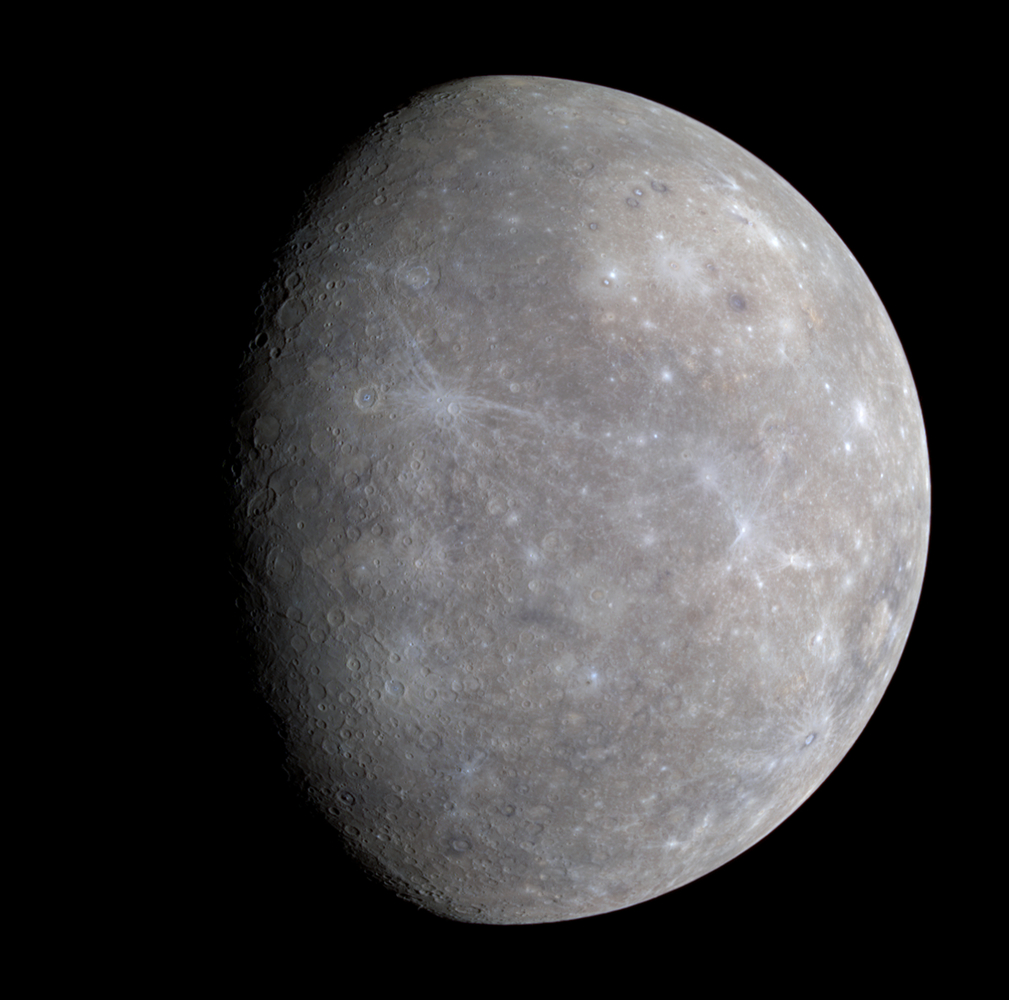This week, news that MESSENGER has become the first space probe ever to be placed into orbit around the planet Mercury has been widely reported. This marks a historic milestone in our exploration of the Solar System, thirty years after the Voyager probes returned superb images of its outer planets, Jupiter, Saturn, Uranus and Neptune. Whilst our understanding of the other planets has steadily increased, Mercury has always remained an elusive planet.
 The problem is that it's very difficult to put a spacecraft into orbit about Mercury, because it's so close to the Sun. Any probe sent from Earth has to swoop in towards the Sun, and the effect is rather like rolling down a hill: the probe ends up travelling so fast at the bottom of the hill, when it gets to Mercury, that it shoots past the planet rather than going into orbit.
The problem is that it's very difficult to put a spacecraft into orbit about Mercury, because it's so close to the Sun. Any probe sent from Earth has to swoop in towards the Sun, and the effect is rather like rolling down a hill: the probe ends up travelling so fast at the bottom of the hill, when it gets to Mercury, that it shoots past the planet rather than going into orbit.
The only spacecraft to have made that journey before MESSENGER was Mariner 10 in 1974, which didn't go into orbit and was only able to map one side of the planet as it flew past. MESSENGER has been able to map the other side of the planet, meaning that for the first time, we now have complete maps of the surfaces of all of the planets.
Mercury is fascinating because it's one of the four rocky planets in the Solar System. All four of them appear to have begun from very similar starting points, but to have evolved down very different paths. The Earth, of course, has turned out to be well suited for life. Mars has no magnetic field and a very thin atmosphere, exposing its surface to the Sun's ultraviolet and ionising radiation. Venus' thick atmosphere of CO2 has lead to a runaway greenhouse effect and surface temperatures of 480oC.
Mercury is the twin that we know rather little about. It actually has a fairly strong magnetic field, protecting its surface from the worst of the Sun's radiation, but also suggesting that it has a surprisingly large iron core at its centre. Current thinking is that it might be an Earth-like planet which lost most of its outer mantle in a violent collision with another planet, leaving only the core with a thin outer layer. We will undoubtedly learn much more about Mercury's history over the next few years, and that will help us to understand not only our own Solar System, but also what we might expect to find around other stars.
References
- Previous How the lily blooms
- Next How Quartz Sculpts Continents









Comments
Add a comment